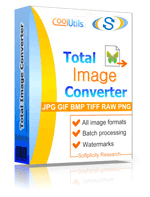1) Upload HEIF file to convert
Drop files here, or Click to select
2) Set converting HEIF to TIFF options
3) Get converted file

 Total Image Converter
Total Image Converter
 JPEG, TIFF, PSD, PNG, etc.
JPEG, TIFF, PSD, PNG, etc. Rotate Images
Rotate Images Resize Images
Resize Images RAW photos
RAW photos Watermarks
Watermarks Clear interface
Clear interface Command line
Command line💾 Upload Your File: Go to the site, click on «Upload File,» and select your HEIF file.
✍️ Set Conversion Options: Choose TIFF as the output format and adjust any additional options if needed.
Convert and Download: Click 👉«Download Converted File»👈 to get your TIFF file.




| File extension | .HEIF |
| Category | Image File |
| Description | HEIF, which stands for High Efficiency Image Format, is a modern image format that offers several advantages over traditional formats such as JPEG. HEIF images are smaller in size while retaining high image quality, making them ideal for use on websites and mobile devices. Additionally, HEIF supports more advanced features such as High Dynamic Range (HDR) and 10-bit color depth, allowing for more vibrant and lifelike images. One of the key benefits of HEIF is its ability to store multiple images and even video within a single file. This is achieved through the use of a container format that can hold both images and metadata such as camera settings and GPS data. This makes it easier to manage and share collections of photos and videos. Another advantage of HEIF is its support for advanced compression techniques such as HEVC (High Efficiency Video Coding), which is used to compress video in 4K and higher resolutions. This means that HEIF can store high-quality video at a smaller file size than traditional formats. Despite its many advantages, HEIF is not yet widely adopted by all devices and software. However, with the growing popularity of mobile devices and the need for smaller image and video files, it is likely that HEIF will become more prevalent in the future. As such, it is worth considering using HEIF for your images and videos to future-proof your content and take advantage of its many benefits. |
| Associated programs | Total Image Converter |
| Developed by | MPEG (Moving Picture Experts Group) |
| MIME type | |
| Useful links | |
| Conversion type | HEIF to TIFF |
| File extension | .TIFF, .TIF |
| Category | Image File |
| Description | The TIFF (Tagged Image File Format) is a widely-used file format for storing digital images, developed by Aldus Corporation (now owned by Adobe Systems). It is a versatile format that supports a wide range of color depths, resolutions, and image types, making it suitable for use in a variety of applications. TIFF files can contain multiple images, each with their own characteristics such as resolution, compression, and color depth. They can also be uncompressed or compressed using a variety of methods, such as LZW, ZIP, and JPEG compression. Additionally, TIFF files can store metadata such as keywords, descriptions, and copyright information. One of the key benefits of the TIFF format is its support for high-quality, lossless image compression. This makes it a popular choice for archiving and sharing images, especially in fields such as graphic design, printing, and photography. TIFF files can also support transparent backgrounds, making them ideal for use in web graphics and other applications where transparency is important. TIFF files can be opened and edited using a wide variety of software programs, including Adobe Photoshop, GIMP, and Microsoft Paint. They are also supported by many operating systems and web browsers. Overall, the TIFF format is a robust and versatile format for storing digital images. Its ability to support multiple images, high-quality compression, and metadata make it a popular choice for a variety of applications, especially those requiring high-quality images. |
| Associated programs | CyberLink PowerDVD InterVideo WinDVD VideoLAN VLC Media Player Windows Media Player |
| Developed by | Aldus, now Adobe Systems |
| MIME type | image/tiff image/tiff-fx |
| Useful links | More detailed information on TIFF files |
Our free online tool is designed to convert HEIF (High Efficiency Image File Format) files to the widely-used TIFF (Tagged Image File Format). HEIF, commonly utilized in modern devices like iPhones for its high efficiency and quality, can sometimes pose compatibility challenges. Converting HEIF to TIFF aids in overcoming these barriers, offering a format that is universally supported across various platforms and applications.
Converting to TIFF offers numerous advantages. The TIFF format is recognized for its lossless compression, ensuring no quality is compromised during the conversion process. This makes it ideal for professional use, particularly in graphic design and photography industries where image fidelity is crucial. Furthermore, TIFF files support multiple layers and pages, making them suitable for complex imaging tasks.
Using our tool is straightforward. Upload your HEIF file, select TIFF as your desired output format, and initiate the conversion. Our platform processes the file entirely in the cloud, delivering rapid results without consuming your local resources. This ensures a smooth experience without the need for software installation.
What sets our conversion tool apart is its commitment to maintaining original image quality while offering a user-friendly interface. We provide a seamless experience with fast processing times, backed by a robust infrastructure designed to handle multiple files effortlessly. Choose our converter to fuse the efficiency of HEIF with the versatility of TIFF, ensuring your images are both high-quality and universally compatible.